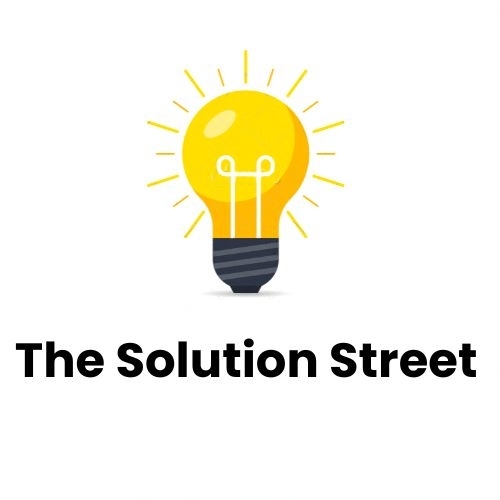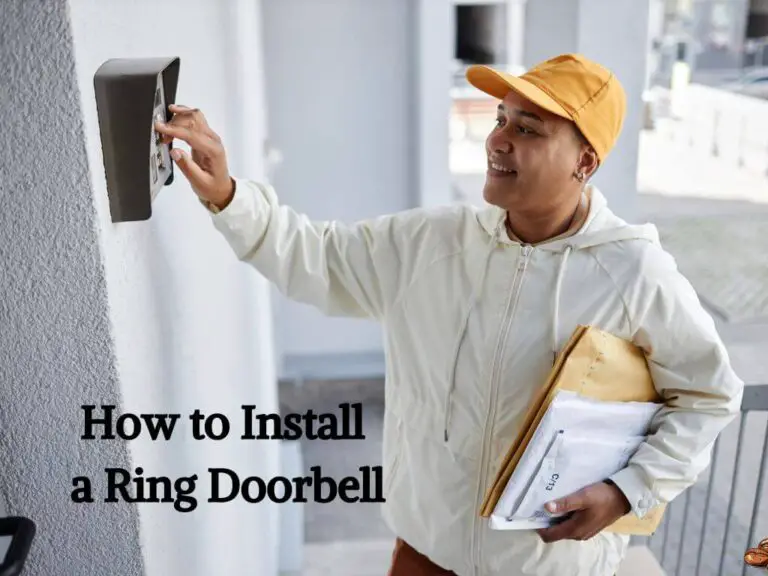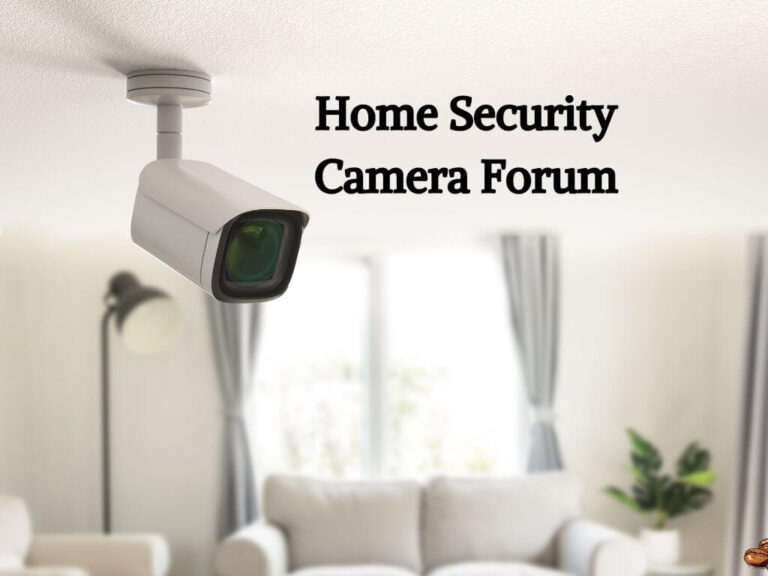Smart home technology began in 1975 with the inception of the X10 protocol. The ECHO IV was the first true smart device conceived in the late 1960s.
Introducing the History of Smart Home Technology
Smart home technology has dramatically transformed the way we live, converging convenience, energy efficiency, and security into our daily lives. This industry has evolved from rudimentary automated systems to sophisticated networks of interconnected devices.
Originating with basic automation like garage doors, the technology now encompasses advanced systems that control lighting, temperature, entertainment, and security, all operable from smartphones and voice commands.
The journey of smart home technology reflects the innovative strides in connectivity and consumer electronics, leading to current trends in IoT and AI integration, making homes more responsive than ever to our needs and preferences. With each step forward, the concept of a cohesive, intelligent living space inches closer from once being a futuristic vision to today’s reality.
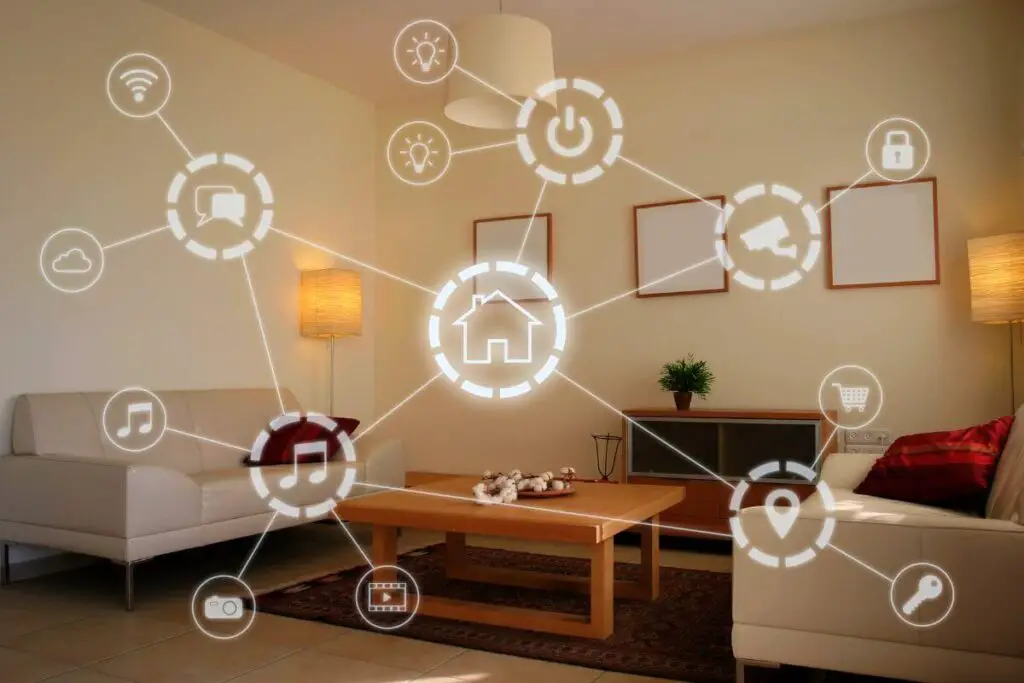
Understanding The History Of Smart Home Technology
Smart home technology has revolutionized the way we interact with our living spaces. From the earliest notions of convenience and control to today’s sophisticated ecosystems, smart home technology has undergone a significant evolution. This journey to the contemporary smart home is not only fascinating but highlights a relentless pursuit of comfort and efficiency. Let’s dive into the key milestones that have shaped this domain.
Early Concepts of Home Automation
Early Concepts Of Home Automation
The dream of a home that caters to its occupants’ needs dates back to the early 20th century. The World’s Fairs, with their futuristic exhibits, often hinted at homes that were self-maintained. By the mid-20th century, science fiction literature and media expanded on these ideas, foreshadowing a future where humans and technology were deeply intertwined.
Emergence of Remote Control Devices
Emergence Of Remote Control Devices
Step into the 1950s and you witness the birth of remote-control devices that began to pave the way for home automation. Simple wired remotes slowly gave rise to wireless solutions in the following decades, controlling everything from garage doors to television sets. This era marked the beginning of the transition from manual to electronic home management.
Integration of Smart Home Systems
Integration Of Smart Home Systems
Propelled by the internet boom and advancements in wireless communication, the late 20th and early 21st centuries witnessed the rapid integration of smart home systems. These systems began to combine various devices, from lighting and climate control to security, within a cohesive network. Smartphones have become the ultimate hub, offering unrivaled control over the smart ecosystem from virtually anywhere.
Today’s smart homes exhibit levels of sophistication that stretch beyond the rudimentary remote controls of the past. They incorporate AI, machine learning, and can even adapt to individual patterns and preferences, making them not just automated but truly intelligent.
Invention Of The Thermostat
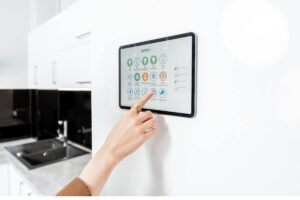
The journey toward smart home technology began with basic yet impactful innovations. Among these, the invention of the thermostat stands as a pivotal moment in the history of home automation. Early thermostats were nothing like their modern counterparts, but they laid the foundation for the level of comfort and control we now enjoy in our connected homes. This invention symbolized the merge between practical mechanics and the pursuit of domestic convenience—a theme that continues to drive smart home technology forward.
Role Of Early Thermostat Inventions
The humble beginnings of the thermostat can be traced back to the late 19th century. The early device wasn’t just about controlling temperatures; it represented a significant step in enabling automated home environments. Let’s look at the groundbreaking developments:
- 1883 – Warren S. Johnson patented the first electric room thermostat, introducing an era of temperature regulation.
- 1906 – Albert Butz advanced the concept with a thermostat that could be integrated with a furnace system, setting the stage for centralized heating.
- 1920s – The next wave saw thermostats become more accessible and user-friendly, creating a rise in domestic adoption.
These innovations did not only provide convenience but also introduced users to automated functionality within their homes for the first time, making the concept of home automation a tangible reality.
Impact On Home Automation
The proliferation of the thermostat has had a long-lasting impact on the evolution of smart home technology:
| Year | Development | Significance |
|---|---|---|
| 1980s | Programmable thermostats | Allowed users to set specific temperatures for different times of the day. |
| 2000s | Wireless and internet-connected thermostats | Enabled remote control and monitoring, serving as a precursor to wider smart home capabilities. |
| 2010s | Smart thermostats with AI | Leveraged artificial intelligence to learn from user behavior and optimize home heating and cooling efficiency. |
The impact of these evolving thermostat technologies has been vast, streamlining energy consumption and paving the way for the intricate ecosystems of devices that define today’s smart homes.
Introduction Of Home Security Systems
The concept of home security has long been integral to the tapestry of personal safety. Over the years, this fundamental need has translated into an evolution of technology aimed at protecting our homes and families.
Originally consisting of simple locks and bolts, home security systems today encompass sophisticated devices that blend seamlessly with smart home technology. Let us delve into how these systems have evolved and impacted the modern home. Security has never been smarter!

Evolution Of Home Security Devices
The transformation from mechanical locks to electronic surveillance is a testament to the rapid advancement in home security devices. From the introduction of basic alarm systems to cutting-edge motion sensors and surveillance cameras, the industry has made massive leaps.
Initially, home security was reactive, focusing on alarms that would sound after a breach. Over time, innovation introduced preventive measures, making security an integral, proactive part of the smart home ecosystem.
- 1970s: The genesis with basic alarms and keypad controls.
- 1980s-1990s: Advent of wired and wireless technology, including infrared motion detectors and automated dialing systems for emergency alerts.
- 2000s: Integration of Internet capability, allowing remote monitoring and control.
- 2010s: The rise of smart surveillance cameras, video doorbells, and integration with other smart home devices.
- 2020s: The proliferation of AI technology, enables features like facial recognition and unusual activity detection.
Impact On Smart Home Technology Development
Home security systems have become a significant driver of smart home technology development. This symbiotic relationship has facilitated the invention of more intuitive, user-friendly, and integrated systems that prioritize personal safety alongside convenience and efficiency.
The availability of real-time data and the ability to administer home environments from afar—facilities ushered in by improved security technology—have propelled the entire smart home sector forward.
| Year | Milestone | Impact |
|---|---|---|
| 1975 | First automated home security systems | Established the electronic security market |
| 1990s | Wireless security technology emerges | Improved installation and reliability |
| 2000s | Internet connectivity in security systems | Remote access and notifications became possible |
| 2010s | Smartphone integration and automated home control | Ultimate control and surveillance convenience |
| 2020s | AI-based security analysis and monitoring | Proactive security measures with advanced analytics |
Development Of Connected Kitchen Appliances
The era of smart home technology has revolutionized not just living rooms and home security, but has also brought significant changes to how we interact with our kitchen appliances. From programmable coffee makers to app-controlled ovens, the kitchen has become a hub of high-tech convenience.
Here, we delve into the technological evolution that has rendered kitchen gadgets more than just utilities; they are now smart, interactive, and interconnected devices designed to make life easier and more efficient.
Introduction Of Smart Refrigerators

The smart refrigerator is one of the pioneering appliances in the connected kitchen revolution. Standing at the forefront of this innovation, smart refrigerators have evolved from merely preserving food to becoming sophisticated gadgets that can:
- Track food inventory and expiration dates with built-in cameras and barcode scanners
- Assimilate with shopping lists and suggest recipes based on current contents
- Streamline kitchen management through touch screens and voice controls
- Integrate with other smart home systems for a seamless user experience
These refrigerators not only connect to the internet but also to our lives, adding layers of interactivity, learning preferences, and personalizing the kitchen experience.
Role Of Internet-connected Cooking Devices
As the heart of the home, the kitchen has embraced the internet revolution with the arrival of connected cooking devices. These intelligent gadgets range from smart ovens that perfectly roast your chicken through app instructions to smart scales that ensure your baking measurements are precise.
| Device Type | Functionality |
|---|---|
| Smart Ovens | Remote preheat, temperature control, and recipe programming features |
| Smart Slow Cookers | Adjustable cooking times and temperatures via smartphone |
| Bluetooth-enabled Thermometers | Real-time temperature monitoring for precision cooking |
Equipped with features like remote monitoring and control, smart cooking devices aid in multitasking and can lead to more efficient meal preparation, less energy consumption, and enhance the overall cooking experience with their user-friendly interfaces.
Smart Lighting Solutions
Welcome to an illuminating journey through the History of Smart Home Technology, with a focus on smart lighting solutions. These innovations have revolutionized the way we interact with the lighting in our homes, offering greater convenience, energy savings, and a touch of futuristic flair.
As households around the world adapt to more sophisticated technologies, understanding the development of smart lighting is essential for appreciating its current capabilities and future potential.
Introduction Of Automated Lighting Control
Automated lighting control systems mark a significant milestone in the evolution of home automation. Gone are the days of manual light switches – today’s smart homes feature lighting that adjusts automatically based on intelligent sensors and preset preferences.
This transformation dates back to the introduction of motion detectors and timers, which paved the way for more complex systems controlled by a central hub or even a smartphone app.
Integration Of Energy-efficient Lighting Systems
The emphasis on sustainability has led to the integration of energy-efficient lighting systems within smart homes. LED bulbs, known for their low power consumption and long lifespan, have become the cornerstone of these systems.
Intelligent lighting solutions now include features such as dimming capabilities, color temperature adjustments, and compatibility with renewable energy sources, all controllable through voice commands or automation routines.
These advancements not only save energy but also offer a customizable ambiance that enhances the at-home experience.
IoT And The Smart Home Ecosystem
Enter the world of interconnected devices, where smart home technology meets the expansive network of the Internet of Things (IoT). This synergy has been revolutionizing how we manage and enjoy our homes.
Seamlessly integrating comfort, energy efficiency, and security, the modern smart home ecosystem leverages IoT to create living spaces that are not just houses but intelligent environments that respond to our needs and preferences.
Impact Of Iot On Home Automation
The integration of IoT technologies has fundamentally transformed home automation. With the advent of smart sensors and connected appliances, homeowners can now enjoy unprecedented control over their homes.
This transformation is not just about convenience but also about enhancing the quality of life.
- Energy Efficiency: Automated thermostat systems learn occupants’ behaviors, making adjustments to save energy without compromising comfort.
- Security: Smart security cameras and alarm systems offer real-time monitoring and alerts, with data accessible from anywhere in the world.
- Accessibility: Elderly or individuals with disabilities benefit from voice-activated devices and automated systems, making daily tasks more manageable.
Role Of Iot In Creating Smart Home Networks
A crucial component of the smart home is its network of devices communicating with each other. This network, powered by IoT, ensures seamless device interaction enabling a cohesive home system.
- Smart home hubs collect data from various sources, process it, and take actions to manage the home environment accordingly.
- IoT protocols like Zigbee and Z-Wave help different devices communicate securely and efficiently, without overburdening home Wi-Fi networks.
- The use of cloud services allows for data analysis and remote management, further enhancing the functionality of smart home systems.
Through the interplay of these elements, IoT creates a robust infrastructure that supports a multi-device ecosystem, crafting a truly smart and responsive home.
Evolution Of Voice-controlled Devices
The journey of smart home technology has been nothing short of remarkable, with voice-controlled devices emerging as one of the most transformative innovations. The convenience of managing your home with simple voice commands has been a game-changer for homeowners everywhere.
This part of the post delves into the invention and integration of these devices, and their profound impact on how we interact with our smart homes.
Invention And Integration Of Voice Assistants
It all began with the vision of a home that could listen and respond. The fruition of this vision came with the advent of voice assistants. Pioneering this development, companies such as Apple, Google, and Amazon introduced intelligent assistants that could not only understand spoken commands but also carry them out with ease.
These assistants became household names: Siri, Google Assistant, and Alexa.
- 1997: Dragon NaturallySpeaking became one of the first commercially available voice recognition software.
- 2011: Apple introduced Siri, integrating it into the iPhone, marking a significant step in voice-controlled device technology.
- 2014: Amazon launched Alexa with the Echo device, geared specifically towards smart home device control.
- 2016: Google debuted Google Assistant, enhancing the smart technology landscape with its deep integration into Android devices.
With this innovation, the concept of a hands-free home became more than just an idea—it was a reality. The continuous improvement in voice recognition accuracy and contextual understanding has led to seamless integration of these assistants into every aspect of home automation.
Impact On Smart Home Interactivity
The impact of voice-controlled devices on smart home interactivity is monumental. By simplifying complex tasks, they have made technology accessible to everyone, regardless of technical skill level. Since their introduction, there has been an exponential increase in the adoption of smart home devices.
Homeowners can now control lighting, temperature, security, and entertainment systems with just their voice. The intuitive nature of voice commands has led to a more natural interaction with technology, making the smart home experience more personalized and engaging.
| Year | Advancements |
|---|---|
| 2014-2018 | Integration of smart speakers with third-party devices for broader smart home control |
| 2019-Present | Development of context-aware voice controls that anticipate user needs |
The user experience has been greatly enhanced, as voice-controlled devices facilitate the management of daily tasks, proving to be indispensable for many users. As technology continues to evolve, the future holds exciting potential for even more sophisticated interactivity within the smart home ecosystem.
Market Penetration And Consumer Adoption
The shift towards smart homes has grown from a niche concept to a widespread phenomenon. The journey of smart home technology from luxury to mainstream marks a significant leap in accessibility.
Innovations have gradually made smart home devices more user-friendly and affordable, facilitating a surge in market penetration and consumer acceptance. This expansion is not just about the number of devices sold but also reflects a broader shift in consumer habits and expectations.
Consumer Awareness And Acceptance
Knowledge of smart home technology has grown, leading to a notable rise in consumer acceptance. This transformation has been driven by various factors:
- Increased exposure through media and advertising
- Positive word of mouth from early adopters
- Demonstrations in retail spaces, showcasing the tangible benefits
- Integration with popular voice assistants, simplifying the user experience
Market research shows a steady climb in the percentage of households adopting smart home devices. Key players in the market are now household names, and consumers are increasingly looking to integrate these technologies into their daily lives.
Impact On Real Estate And Home Construction Industry
The growing consumer demand for smart homes has had a significant impact on the real estate and home construction industry. Builders and real estate agents recognize the value of integrating smart home technology into new homes, resulting in:
- Smart homes becoming a standard offering in new construction
- Incorporation of wiring and layouts that support sophisticated home automation systems
- New career opportunities in smart home installation and consultation services
Furthermore, homes equipped with smart technology are often seen as more attractive to potential buyers, sometimes even commanding a higher market price.
Influence Of Smart Home Technology On Lifestyle
The advent of smart home technology has significantly altered the way we live. Just a few decades ago, the idea of controlling various home appliances and systems with a simple voice command or a smartphone tap was confined to the realms of science fiction.
Today, smart home technology is a reality that has improved convenience, security, and energy efficiency. As we delve into the influence of smart home technology on lifestyle, we will explore its fundamental impacts on daily living and its role in championing environmental conservation and sustainability.
Let’s examine how these innovations have carved a smarter, more sustainable path for modern living.
Impact On Daily Living And Convenience
Smartphones, voice-assistance devices, and AI have become the central control systems for our homes, making daily tasks simpler and more efficient. From smart thermostats that adjust the temperature to our liking, to intelligent refrigerators that keep track of our groceries, the following points highlight the convenience brought about by smart home technology:
- Personalized Automation: Program lights, climate, and entertainment systems to adjust to personal schedules and preferences.
- Home Security: Smart locks, cameras, and alarm systems provide real-time monitoring and control, ensuring peace of mind.
- Remote Access: Control devices and receive notifications from anywhere in the world with internet access.
These advancements have not only enhanced comfort but have also granted users unparalleled control over their home environments, transforming mundane tasks into effortless experiences.
Role In Environmental Conservation And Sustainability
Smart home technology doesn’t just make life easier; it also plays a crucial role in promoting environmental stewardship and long-term sustainability. With the planet’s health in focus, consider these key contributions of smart homes:
- Energy Efficiency: Devices like smart thermostats and LED lighting systems optimize energy use, leading to lower utility bills and reduced carbon footprint.
- Resource Management: Smart sensors detect water leaks, and smart irrigation systems manage water usage, conserving precious resources.
- Eco-Friendly Choices: Intelligent appliances provide insights on energy consumption, encouraging eco-smart decisions.
By integrating sustainable practices into the fabric of daily life, smart home technology lays the groundwork for a greener future, ensuring we tread lightly on the earth while enjoying the comforts of advanced living.
The Bottom Line
Reflecting on the journey of smart home technology reveals a path marked by innovation. From rudimentary 1970s inventions to today’s advanced systems, the evolution is clear. As we embrace the convenience and efficiency of smart homes, we stand on the shoulders of past visionaries.
With each smart thermostat or voice command, we participate in a history that continuously shapes our daily lives. Looking ahead, the potential for smarter, more connected homes is boundless, promising a future where technology serves us in even more seamless ways.
Frequently Asked Questions Of the History Of Smart Home Technology
Q1# How Many Homes Have Smart Home Technology?
Q2# What Is The Introduction Of Smart Home Technology?
Q3# What Was The Smart Home Technology In The 2000s?
Q4# When Was The Smart Home Technology First Introduced?
This is when the X10 communication protocol was invented, allowing devices to communicate and be controlled through a home’s existing electrical wiring. This technology was groundbreaking at the time, but it also had limitations, including being expensive and not very reliable.
